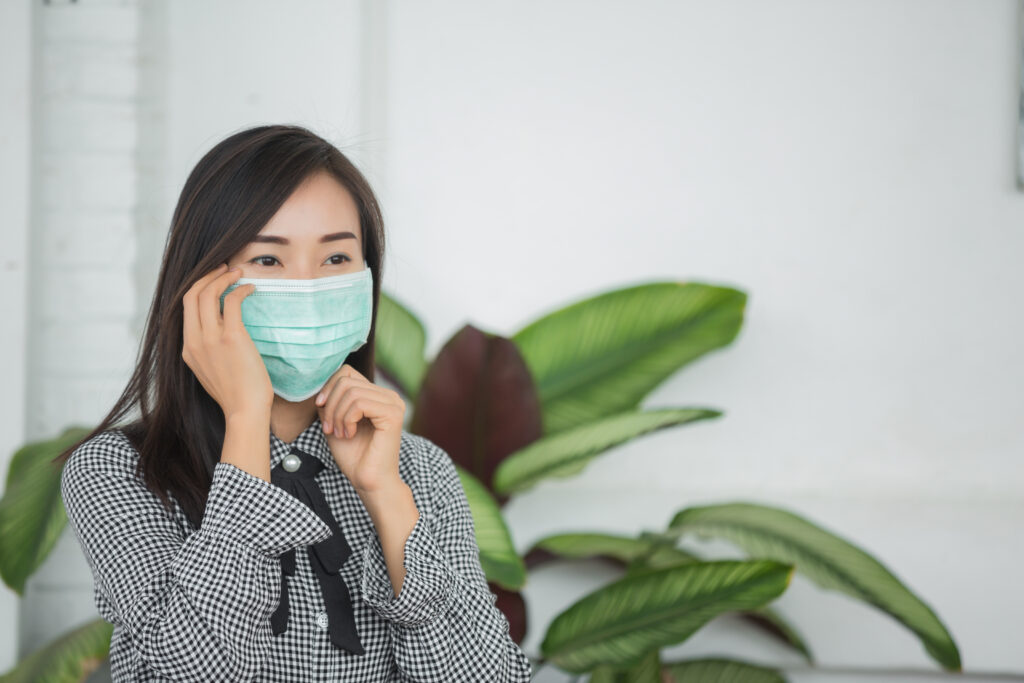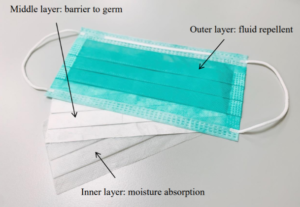- Home
- Health Center
- Health Info
- Know Your Face Mask: Features Explained
How to Choose
Know Your Face Mask: Features Explained


The main function of a face mask is to be a physical barrier between the nose and mouth of the wearer and the potential contaminants in the environment. There are many types of face masks and each product comes with its own specification. This is a simple quick guide to help you understand various specifications when it comes to your face mask.
Before you read on, remember wearing a face mask does not give you a 100% protection from COVID-19. A mask must be worn in public if one has symptoms of cough and flu. The Ministry of Health also recommends social distancing, good personal and hand hygiene to prevent the spread of the virus.
Earloop or Tie-on
This refers to how the mask is held on the face. Earloops are generally more convenient as they can be easily looped on your ears. The tie-on mask can be less convenient as you need to tie knots. You might need help from another to tie it on as it may be difficult to reach back. However, the tie-on mask may be more suitable for women wearing a hijab or a headscarf.
Plies [Example: 1-ply, 3-ply, 4-ply]

The image above is a standard three-ply mask. It has an outer layer to repel fluid, a middle layer that acts as a barrier to germs and an inner layer for moisture absorption. It is the most widely used mask in Malaysia. However, there are also one-ply masks (also known as a paper mask), they act as a barrier but it does not repel fluid; it may get damp easily. A four-ply mask has an extra middle layer that acts as an extra barrier to germs. The four-ply mask provides more protection for the wearer and is of a higher quality compared to the three-ply mask.
Mask Colour
There are many colours (green, blue, orange, white, grey) on the outer layer of a standard three-ply mask. You may choose any colour you fancy as it makes no difference. Whichever colour it is, the colour-side should be worn facing out.
Face Shields

Face shields are made with a foam headband that holds the shield away from the face for ventilation and airflow. The clear shield protects the face and face mask from direct splatter.
N95 or N99 Face Masks
The ‘N’ refers to a mask that is resistant to solid and liquid particulates, but it is NOT resistant to oil particulates. The ‘95’ or ‘99’ refers to the efficiency of filtration. N99 provides more protection from external particles than N95. The N95 mask is considered a maximum performance mask as compared to a regular three-ply mask. However, it may be difficult to breathe when worn. It is usually worn by hospital staff, for example when treating patients with airborne diseases.
Cotton Mask or D.I.Y Mask
Due to the global shortage of face masks, many have come up with their own ‘Do It Yourself’ masks, generally made from cotton material. These masks do not have any particular standards to comply with, therefore they may not have the technical features explained in this article. However, they may be better than wearing no mask as a cotton mask is still a physical barrier.
More Technical Face Mask Terms
The terminologies below are more technical. They are useful to know but remember, COVID-19 cannot be prevented 100% by wearing a face mask. Remember to social distance and wash your hands regularly and keep good personal hygiene.
BFE [Examples: BFE ≥ 98%, BFE ≥ 95%]
Bacterial Filtration Efficiency refers to the percentage of particles filtered out at a pore size of 1.0 to 5.0 microns. Simply put, the higher the BFE the more protection the mask provides.
PFE [Examples: PFE = 99.9%, PFE ≥ 98%, PFE ≥ 95%]
Submicron Particle Filtration Efficiency refers to the percentage of particles filtered out at a pore size of 0.1 to 1.0 microns. Due to the smaller pore size, PFE is a superior form of measurement compared to BFE. The higher the PFE, the more protection the mask provides.
Fluid Resistance [Examples: 80mmHg, 120mmHg, 160mmHg]
This refers to the resistance of a mask to the penetration of fluids under pressure (mmHg). In simple terms, the higher the resistance, the less likely external fluids (for example saliva or blood) can penetrate the mask and come into contact with the wearer.
ASTM, EN14683, ISO 10993
The American Society for Testing and Materials (ASTM) has a grading system for face masks. There is ASTM level 1, 2 and 3 with level 3 being the highest grade. EN14683 is a European standard. There are two types of ratings under this model Type IIR Standard is a higher grade compared to Type II Standard. ISO refers to the International Organisation of standardization, wherein the ISO 10993 is a biological evaluation of medical devices. The above mentioned certification or grading systems are a form of quality assurance for the user. So if you see any of these on the product packaging, you can be assured that the mask you purchase is of good quality.
Reference:
- COVID-19 (Infografik). Ministry of Health Malaysia. (Web accessed April 2020). Weblink: http://www.moh.gov.my/index.php/pages/view/2019-ncov-wuhan-infografik
- Use Mask Properly. Centre for Health Protection. July 2015. (Web accessed April 2020) Weblink: https://www.chp.gov.hk/files/pdf/use_mask_properly.pdf
- Face Mask (Medicos Product Catalogue) (Web accessed April 2020) Weblink: https://www.medicos.com.my/product-category/face-mask/
- Guide to Face Mask Selection and Use. Crosstex. (Web accessed April 2020) Weblink: https://www.crosstex.com/sites/default/files/public/educational-resources/products-literature/guide20to20face20mask20selection20and20use20-202017.pdf
Latest Health Info
Healthy Weight, Happy Joints
How Does Weight Affect Knee Health? The Link Between Pounds And Pain Osteoarthritis (OA) involves the degeneration of joints, which ...
The Gut Warriors: Prebiotics, Probiotics and Postbiotics
When it comes to gut health, you’ve probably heard of prebiotics and probiotics. But did you know there’s also ...
Tip Moreh: Masa Berbuka Puasa
Moreh adalah tradisi unik yang biasanya diadakan selepas solat tarawih pada bulan Ramadan. Ia melibatkan penyediaan dan perkongsian makanan ringan ...



